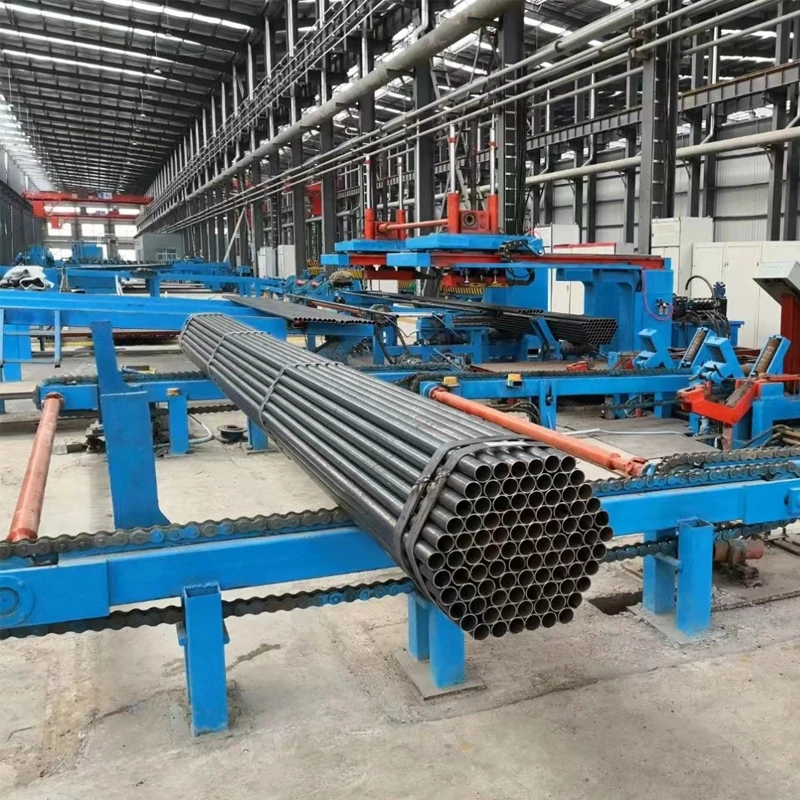Designing Efficient Decoiler Machines for Modern Manufacturing Applications
Decoiler Machine Design An Essential Element in Coil Handling
The decoiler machine is an essential piece of equipment in metalworking and manufacturing industries, primarily designed to facilitate the unwinding of coiled materials such as steel or aluminum sheets. This device serves as a crucial initial step in many metal processing operations, ensuring smooth and efficient production lines. The design of a decoiler machine involves several key considerations that influence its performance, reliability, and overall effectiveness.
1. Understanding the Decoiler Function
At its core, a decoiler machine is responsible for unrolling coils of material. These coils can vary in size, material composition, and thickness, which means the machine must be adaptable to different specifications. The principal functions of the decoiler include controlling the unwinding speed, maintaining synchronization with downstream processes, and preventing material damage during the unwinding process.
2. Key Components of Decoiler Machines
The design of a decoiler machine involves various components, each playing a significant role in its operation
- Mandrel The mandrel is the central axle around which the coiled material is mounted. It is often adjustable to accommodate different coil widths and maintain tension during the unwinding process.
- Drive Mechanism Decoiler machines utilize a drive mechanism, typically an electronic motor, to control the unwinding speed. This allows for precise management of material flow, which is essential for maintaining consistency in subsequent operations like cutting or stamping.
- Tension Control System A tension control system is vital for ensuring that the material does not become slack or overly tight. This system can include pneumatic brakes or feedback sensors that continuously monitor and adjust the tension as the coil unwinds.
- Support Frame A robust support frame is essential for the stability and durability of the decoiler. It needs to withstand the heavy weight of the coils, especially when dealing with thicker materials.
decoiler machine design

When designing a decoiler machine, several factors must be taken into account to maximize efficiency and performance
- Material Specifications The type of material being handled significantly influences the design. Different materials can have varied tensile strengths and behaviors when uncoiling. Therefore, understanding the specific material properties is crucial.
- Coil Dimensions The diameter, width, and weight of the coils are fundamental factors that determine the size and structural integrity of the decoiler machine. A well-designed decoiler should accommodate a wide range of coil dimensions while ensuring stability.
- Operational Environment The environment where the machine will operate can affect its design. Factors such as temperature, humidity, and air quality should be considered, especially if the decoiler is to be used in an industrial setting prone to dust or corrosive elements.
- Integration with Other Equipment The decoiler machine should seamlessly integrate with other machinery in the production line. Designing compatibility with downstream processes such as shearing, punching, or stacking is essential for optimal workflow efficiency.
4. Safety Features
Safety is a paramount consideration in machine design. Decoiler machines should include safety features such as emergency stop buttons, guards, and sensors to detect unusual conditions, such as excessive tension or misalignment. Proper safety protocols can mitigate risks associated with operating heavy machinery.
5. Conclusion
In summary, the design of a decoiler machine is a complex and multifaceted task that requires an in-depth understanding of materials, engineering principles, and operational requirements. By carefully considering the machine’s components, functionality, and integration into the broader production system, manufacturers can develop decoiler machines that enhance productivity, ensure material integrity, and uphold safety standards. As industries continue to evolve, the importance of efficient coil handling remains a cornerstone in the field of metalworking and manufacturing, making the decoiler machine an indispensable asset.
-
High Frequency Straight Seam Welded Pipe Production Line|BzZhou Xinghua|Precision Welding&EfficiencyNewsJul.30,2025
-
High Frequency Straight Seam Welded Pipe Production Line - BzZhou Xinghua|Precision Engineering&EfficiencyNewsJul.30,2025
-
High-Frequency Straight Seam Welded Pipe Production Line-BzZhou Xinghua Machinery Equipment Manufacturing Co., LTD.NewsJul.30,2025
-
High-Frequency Straight Seam Welded Pipe Production Line-BzZhou Xinghua Machinery Equipment Manufacturing Co., LTD.|Precision Manufacturing, High EfficiencyNewsJul.30,2025
-
High Frequency Straight Seam Welded Pipe Production Line-BzZhou Xinghua Machinery Equipment Manufacturing Co., LTD.|Precision Steel Pipe Manufacturing&Industrial EfficiencyNewsJul.29,2025
-
High-Frequency Straight Seam Welded Pipe Production Line-BzZhou Xinghua Machinery Equipment Manufacturing Co., LTD.|Precision Steel Pipe Manufacturing&Industrial EfficiencyNewsJul.29,2025


